
In biology, a taxon is a group of one or more populations of an organism or organisms seen by taxonomists to form a unit. Although neither is required, a taxon is usually known by a particular name and given a particular ranking, especially if and when it is accepted or becomes established. It is very common, however, for taxonomists to remain at odds over what belongs to a taxon and the criteria used for inclusion, especially in the context of rank-based ("Linnaean") nomenclature. If a taxon is given a formal scientific name, its use is then governed by one of the nomenclature codes specifying which scientific name is correct for a particular grouping.
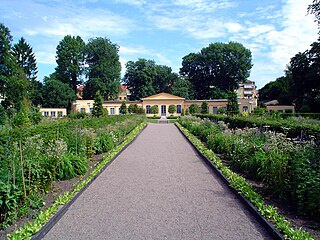
The International Code of Nomenclature for algae, fungi, and plants is the set of rules and recommendations dealing with the formal botanical names that are given to plants, fungi and a few other groups of organisms, all those "traditionally treated as algae, fungi, or plants". It was formerly called the International Code of Botanical Nomenclature (ICBN); the name was changed at the International Botanical Congress in Melbourne in July 2011 as part of the Melbourne Code which replaced the Vienna Code of 2005.

In biology, a type is a particular specimen of an organism to which the scientific name of that organism is formally associated. In other words, a type is an example that serves to anchor or centralizes the defining features of that particular taxon. In older usage, a type was a taxon rather than a specimen.

The International Association for Plant Taxonomy (IAPT) is an organization established to promote an understanding of plant biodiversity, facilitate international communication of research between botanists, and oversee matters of uniformity and stability in plant names. The IAPT was founded on July 18, 1950, at the Seventh International Botanical Congress in Stockholm, Sweden. The IAPT headquarters is located in Bratislava, Slovakia. Its president, since 2017, is Patrick S. Herendeen of the Chicago Botanic Garden; vice-president is Gonzalo Nieto Feliner of the Real Jardín Botánico, Madrid; and secretary-general is Karol Marhold of the Plant Science and Biodiversity Centre, Slovak Academy of Sciences, Bratislava.
Nomenclature codes or codes of nomenclature are the various rulebooks that govern the naming of living organisms. Standardizing the scientific names of biological organisms allows researchers to discuss findings.
Descriptive botanical names are scientific names of groups of plants that are irregular, not being derived systematically from the name of a type genus. They may describe some characteristics of the group in general or may be a name already in existence before regularised scientific nomenclature.
The International Code of Nomenclature for Cultivated Plants (ICNCP) is a guide to the rules and regulations for naming cultigens, plants whose origin or selection is primarily due to intentional human activity. It is also known as Cultivated Plant Code. Cultigens under the purview of the ICNCP include cultivars, Groups, and grexes. All organisms traditionally considered to be plants are included. Taxa that receive a name under the ICNCP will also be included within taxa named under the International Code of Nomenclature for algae, fungi, and plants, for example, a cultivar is a member of a species.
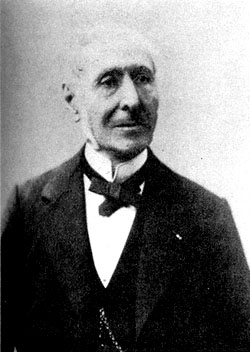
Alphonse Louis Pierre Pyramusde Candolle was a French-Swiss botanist, the son of the Swiss botanist Augustin Pyramus de Candolle.
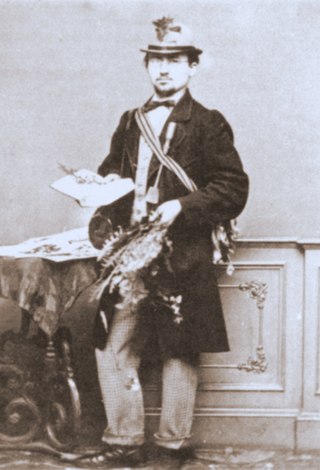
Carl Ernst Otto Kuntze was a German botanist.

A conserved name or nomen conservandum is a scientific name that has specific nomenclatural protection. That is, the name is retained, even though it violates one or more rules which would otherwise prevent it from being legitimate. Nomen conservandum is a Latin term, meaning "a name to be conserved". The terms are often used interchangeably, such as by the International Code of Nomenclature for Algae, Fungi, and Plants (ICN), while the International Code of Zoological Nomenclature favours the term "conserved name".

Cordylanthus, commonly known as bird's beaks, is a genus of parasitic plants in the broomrape family, Orobanchaceae. These western North American natives are sparse, weedy-looking annuals with long branching erect stems and little foliage, and many bear bird's-beak–shaped flowers. They are remarkable among the broomrapes for growing at searing temperatures in arid climates.
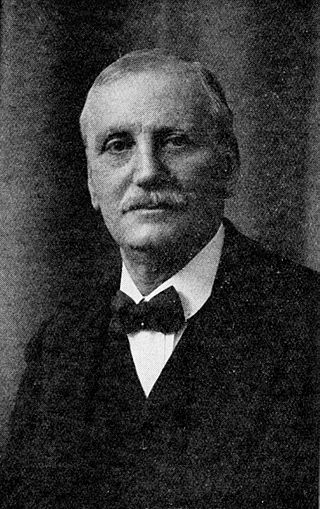
John Isaac Briquet was a Swiss botanist, director of the Conservatoire Botanique at Geneva.
The name Crataegus oxyacantha L. has been rejected as being of uncertain application, but is sometimes still used.
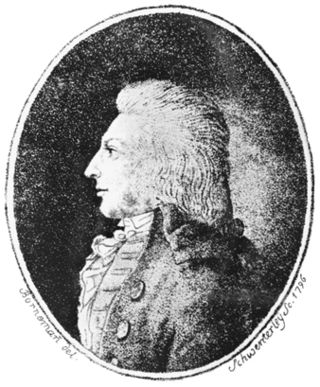
In mycology, a sanctioned name is a name that was adopted in certain works of Christiaan Hendrik Persoon or Elias Magnus Fries, which are considered major points in fungal taxonomy.
Marinus Anton Donk was a Dutch mycologist. He specialized in the taxonomy and nomenclature of mushrooms. Rolf Singer wrote in his obituary that he was "one of the most outstanding figures of contemporary mycology."
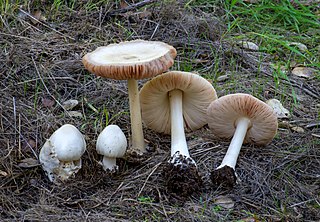
Volvopluteus gloiocephalus, commonly known as the big sheath mushroom, rose-gilled grisette, or stubble rosegill, is a species of mushroom in the family Pluteaceae. For most of the 20th century it has been known under the names Volvariella gloiocephala or Volvariella speciosa, but recent molecular studies have placed it as the type species of the genus Volvopluteus, newly created in 2011. The cap of this mushroom is about 5–15 cm (2–6 in) in diameter, varies from white to grey or grey-brown, and is markedly sticky when fresh. The gills start out as white but they soon turn pink. The stipe is white and has a sack-like volva at the base. Microscopical features and DNA sequence data are of great importance for separating V. gloiocephalus from related species. V. gloiocephalus is a saprotrophic fungus that grows on grassy fields and accumulations of organic matter like compost or woodchips piles. It has been reported from all continents except Antarctica.

This is a list of terms and symbols used in scientific names for organisms, and in describing the names. For proper parts of the names themselves, see List of Latin and Greek words commonly used in systematic names. Note that many of the abbreviations are used with or without a stop.
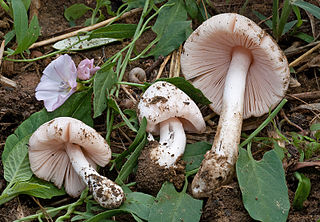
Volvopluteus earlei is a species of mushroom in the family Pluteaceae. It was originally described in 1911 by American mycologist William Alphonso Murrill as Volvariopsis earlei, based on collections made in a Cuban banana field. The fungus was later shuffled to the genera Volvaria and Volvariella before molecular studies placed it in Volvopluteus, a genus newly described in 2011.
The Kew Rule was used by some authors to determine the application of synonymous names in botanical nomenclature up to about 1906, but was and still is contrary to codes of botanical nomenclature including the International Code of Nomenclature for algae, fungi, and plants. Index Kewensis, a publication that aimed to list all botanical names for seed plants at the ranks of species and genus, used the Kew Rule until its Supplement IV was published in 1913.

Chloropyron is a genus of plants in the botanical family Orobanchaceae. The plants of this group were formerly classified in the subgenus Hemistegia of the genus Cordylanthus, but were elevated to genus level by David C. Tank, John Mark Egger and Richard G. Olmstead in 2009 after molecular phylogenetic work.














